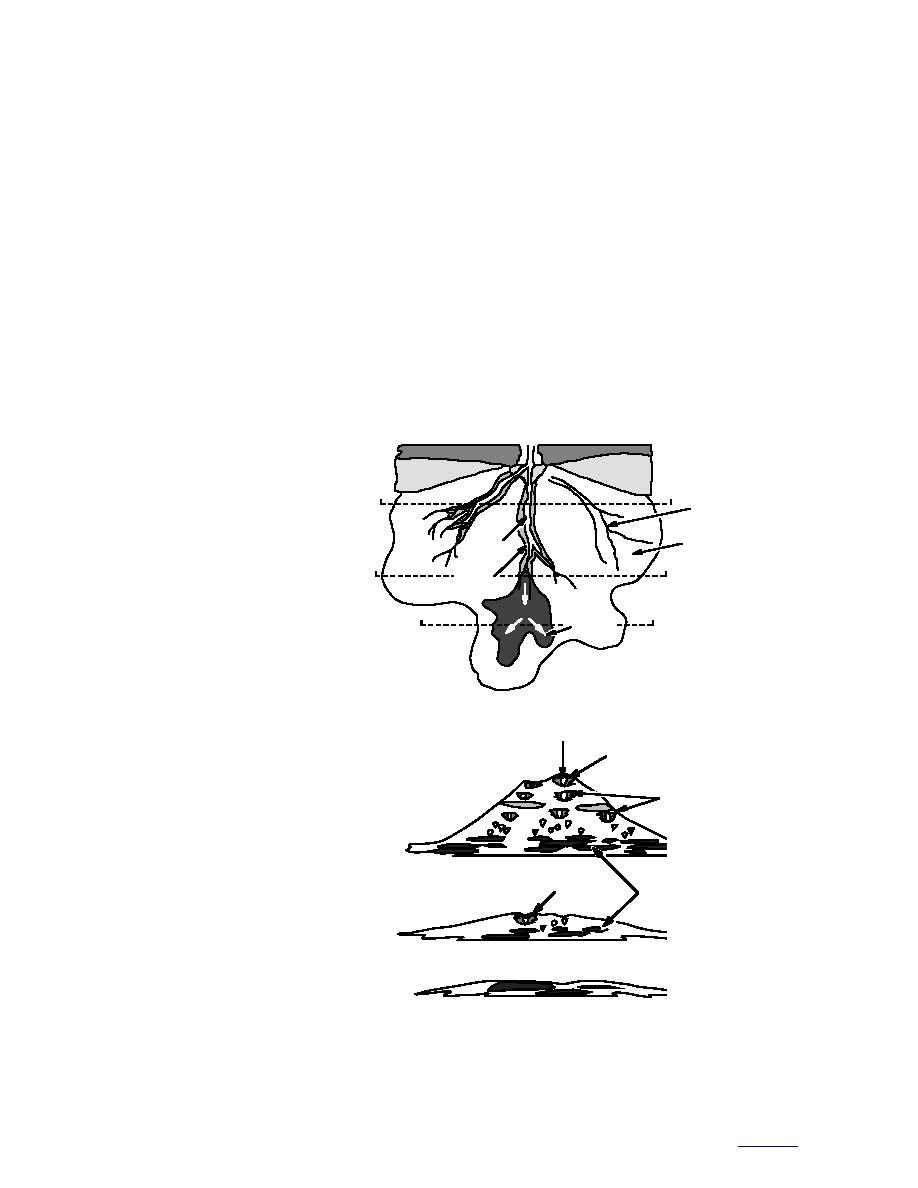
legger Cove Formation, but available data are not
mostly "clean" gravel normally associated with
conclusive (Hunter et al. 1997). Descriptions of
glacial outwash.
the confining layer below the cantonment range
The fan's strata may also interfinger with more
from till (wells 1 and 17; Cederstrom et al. 1964) to
or less continuous horizons of diamicton where it
variations of silty gravel, clayey gravel, or silt
lies near the margin of the Elmendorf Moraine.
with sand (e.g., AP-3482, AP-3485) to silt (AP-
Glaciers frequently generate debris flows as sedi-
3468) and clay (AP-3479; USACE 1996b). The
ments are released by melting ice during the mo-
majority of these descriptions suggest that they
raine building process. These debris flows could
are not all fine-grained, estuarine deposits.
have produced diamictons interbedded with silts
Clayey gravel, silty sand, or silt with sand could
deposited from meltwater, similar to what is
be interpreted as a nearshore or ice marginal
found along the margin of the Matanuska Glacier
phase of the Bootlegger Cove Formation, but other
today (Lawson 1979, 1982). More localized layers
interpretations are possible, such as diamicton
or lenses of diamicton may also be generated in
originating as ice marginal debris flows or till.
meltwater channels incised into the moraine,
Many of the strata are also laterally discontinu-
overall forming a small fan-shaped deposit (Fig.
ous and therefore probably not the Bootlegger
13; map unit eo; Plate 1). Sand and gravel layers
Cove Formation. For example, the 9-m confining
layer in well 1 (Cederstrom et
Incised Gully
al. 1964) at the north side of
Moraine
Edge
the railroad yard in the can-
Flow
Deposits
tonment area does not corre-
late laterally with deposits in
A
A
Inactive Channels
the center of the cantonment,
and Fan Lobe
where over 42 m of gravel and
Active
Overbank
sand lies below the surface
Channel
Deposits
(well
AP-3591,
USACE
B
B
Leveed
1996b). The genesis of these
Channel
deposits needs to be defined
Channels
C
C
by better and more detailed
Depositional
Lobe
analyses to determine their
spatial geometry.
Not Drawn to Scale
Mountain View fan
Extreme Vertical Exaggeration
The uppermost strati-
Active Channel
graphic unit below the can-
Deposits
tonment is the Mountain
Levee Deposits
View fan. Its strata are mostly
sand and gravel, with a high
concentration (10 to 15%) of
C
D
fines (silt, clay). Interbedded
silty sand and gravel contain-
A
ing lenses and layers of silt
and clay are common. Silt and
Dist
Active Fan
clay horizons may be rafted
Chan
blocks transported during
Lob
outburst floods or deposits in
B
small ephemeral ponds and
backwater areas of aban-
doned channels. These fan
C
deposits are commonly on the
order of 15 to 18 m thick in the
Figure 13. Fan such as those along the margin of the Elmendorf Moraine. The
vicinity of the cantonment
stratigraphy near the apex is composed of interbedded diamicton sheets and
area (Cederstrom et al. 1964)
incised channel deposits (gravel). Increased meandering near the fan toe produces
and are not similar to the
broad sand and gravel lenses. (After Galloway and Brown 1973.)
19
to contents



 Previous Page
Previous Page
